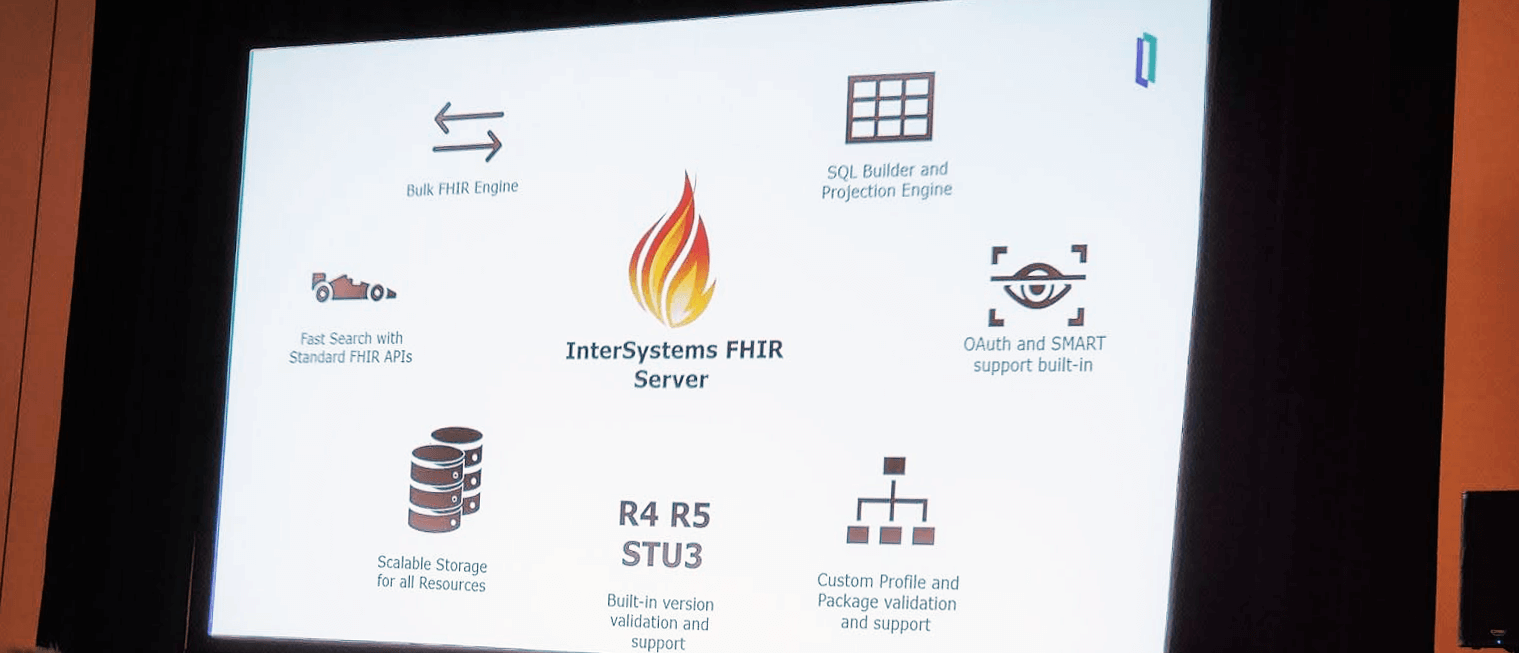
This session focused on recent achievements and future directions in FHIR development, highlighting key advancements and upcoming initiatives.
Elijah Cotterrell, Project Manager at InterSystems, began by listing the following achievements from the past 12 months:
- ChatEHR: New AI software enables clinicians to interact with medical records through natural language chat.
- Medical Device Interoperability: The HL7 FHIR initiative specifically targets medical device interoperability. Remote monitoring devices, previously challenging to integrate, now benefit from a recent FHIR accelerator.
- TEFCA & FHIR Adoption: The first federal health agency joined TEFCA via eHealth Exchange, demonstrating public sector involvement. The Indian Health Service has adopted FHIR.
- AI-Native Health Systems: Meaningful implementations of AI-native health systems are becoming a reality, allowing clinicians to converse with clinical repositories.
- Device Network Scaling: IoT growth continues, resulting in the massive scaling of device networks for monitoring purposes.
- National Data Exchange Growth: National data exchange initiatives are continuously expanding.
FHIR is not only well-suited for integration but also for developing new solutions across APIs, patient access rules, clinical decision-making, and research.
New Offer: FHIR as a Service
This new offering addresses customer demand for scalable solutions, particularly in the cloud, covering subscriptions, deployments, and build processes.
An introduction to InterSystems FHIR Server is available on InterSystems’ website.
- Multi-Server FHIR Dashboards: Provides common control for dashboards and facilitates the creation of more metrics.
- Fast, Simple Deployments with OAuth: The OAuth FHIR Client Quickstart simplifies and speeds up deployments.
- Ingest and Export Bulk FHIR:
- Bulk FHIR: Innovating beyond regulation, offering a streamlined path to the FHIR Server with automatic, high-speed ingestion.
- Performance Breakthroughs (JsonAdvSQL): New search strategies deliver significant speed improvements, up to 20x faster for Includes and Revincludes, 15x faster for reverse chain queries, and up to 1,000x quicker for complex queries involving Includes and _has.
The session included an on-screen demo showcasing how to connect to external FHIR servers to pull in data. Built-in data quality checks were highlighted. The demonstration included initiating an export, choosing a configuration, and utilizing the built-in scheduler.
The demonstration included a sample Clinical Assistant, allowing users to ask questions in natural language, leveraging an LLM. The process involved retrieving tools and loading them into an OpenAI prompt, with the system performing necessary actions to obtain information.
Looking ahead, Cotterrell shared the following developments to watch for:
- MCP (Model Context Protocol): This protocol appears to be the future middle layer, with tools built into client applications. It represents a client-server model facilitating unified client access for agents, LLMs, and hosts.
- Subscriptions, CDS, R6: Future developments include greater terminology support, enhanced subscriptions, and improved Clinical Decision Support (CDS) pathways and resources in FHIR R6.
- Co-evolution with Domains: Continued co-evolution is expected with domains such as IPS, Clinical Research (Vulcan), and payer-provider initiatives.
- Scaling: Future efforts will focus on query speed, ingestion throughput, and storage partitioning to support petabyte-scale clinical data repositories.

